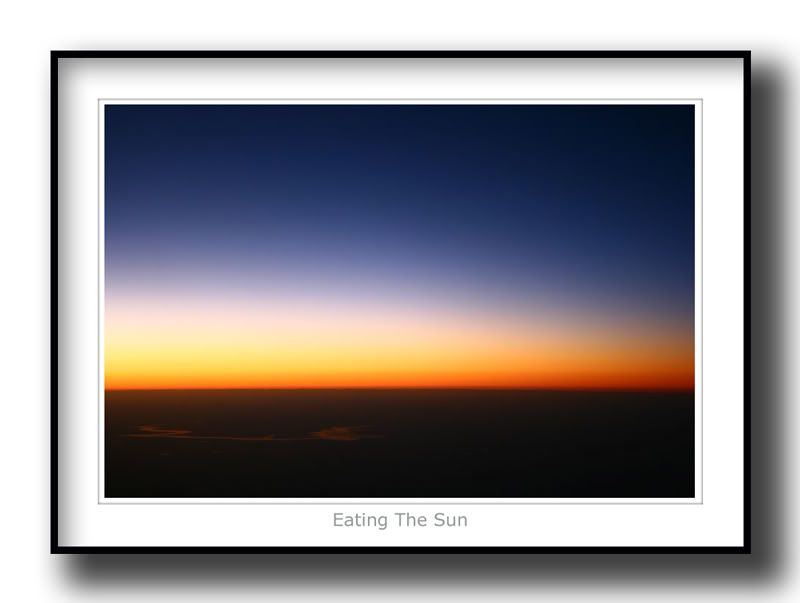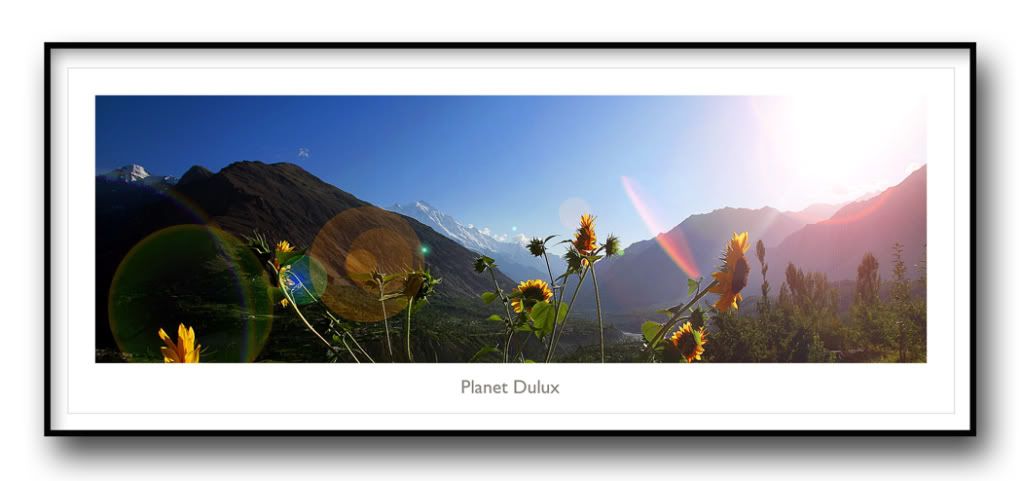Here's what happened today. What really happened...

Dawn broke first over the Pacific. Because the international dateline bisects the largest ocean that's where the dawn always breaks first - planting its first kiss over the Pacific and perhaps on the prows of a few container ships. Then the dawn made landfall in the north a few hours later, sweeping a fiery multi-hued arc over the icy tundra, and at the end of the world to the south, it broke like a wave crashing against the mountains of New Zealand. Soon, effortlessly, it glided westwards; filling the rice paddies of the Philippines and the depths of the South China Sea. It touched-down in Thailand on the faces of the drivers sleeping in their tuk tuks. And everytime the sunlight hit something green - something truly green, not something painted green or dyed green: something with greenness that grew - the most amazing miracle on the planet began - anew.
When the light of dawn shone on the greenness, the greenness smiled and welcomed it, and comprehended it, and put it to use. The greenness thrived and drank, nay gobbled up the dawn. The greenness was chlorophyll, a pigment. It was arranged such that the sunlight's energy bounced from one chlorophyll to the next like a frog across lily pads before reaching the subtle trap at the centre, the three billion year old trap where the light of the sun becomes the stuff of the earth. The stuff of life, the stuff of frogs, the stuff of you and me - even the stuff of love (if you want to stretch the metaphor to breaking point). As the trap's jaws snapped shut on the sunlight, the spring that powered those jaws pulled electrons from a nearby water molecule, breaking it up into hydrogen and oxygen. The hydrogen was used along with the stream of electrons to turn carbon dioxide into organic matter. The oxygen was discarded as waste into the air to be breathed in by us. In every plant reached by the dawn this extraordinary three billion year old mechanism came into life millions of times over. The carbon dioxide to which these electrons were channelled was turned first into sugar and then all sorts of other molecules. Some of these were used to thicken the plant stems, others to lengthen the leaves, to enrich the soil and to colour the flowers still held tight in their buds. Light made life: that is what photosynthesis means.
If the light was to stop, on this day or any other, so would everything you care about. It has happened before. The dawn stopped in the time of the dinosaurs ending their reign. It can happen again. The manufacture of life from light is not the only thing going on as our dawn sweeps over Asia. For every leaf that greets the dawn there's an ant that eyes the leaf; for the growing grass there are hungry calves, and for the fattening calves there are hungry men; for the sugar-swollen root there's a sugar-sucking fungus. For growth there's decay. For life, there is death. By the time the dawn has reached America, most of the people on the earth have woken and gone to work; some in the far east have retired for the night. During their working day, almost all of those who can see will have seen something green. In built up London (My World) I can count well over five hundred trees from my trip to Canary Wharf. We might not give a conscious thought to the omnipresent green, but at some level we will enjoy it. We will flock to it in parks on summer days and relax under its cool sun-dappled shade. The greenness of life is so important to us that our eyes are tuned to discriminate among its various hues more precisely than the shades of any other colour. The green, we know without thinking, is good.
But we don't just enjoy seeing the green. It shapes the possibilities of our lives. More than two billion of us will have tended to the eaters of the sun in some way today. We will have hoed the soil for them, fed the sun eaters fertilizer, cared for them, kept em warm, kept them watered. We will have picked their fruits, dug up their roots, fed them to our livestock and ourselves. We will have made their carcasses into fabrics and furniture and firewood. We will have tended to some of them for their beauty and for their smell. It is not We who rule the world. They do: the sun eaters are our true masters. How little we know it.
And even if we ignore these plants, these eaters of the sun completely, by locking ourselves away in concrete-steel jungles, we will still rely on yesterday's sun eaters. Everyday we burn thirty million tonnes of fossil fuel to generate our electricity and drive our cars and warm our homes. And all that power and warmth comes from sunlight eaten long ago - energy trapped in coal and oil. This planet is covered not in dust, or lava, or ice like the other lifeless planets in the solar system. It is covered in tiny photosynthetic machines, vibrant whirring electron transport chains embedded in membranes, that trap the sun and eat it. This is the most wonderful trick ever invented. And it was invented soon after life first emerged on earth. These machines are more numerous than the sands of the sea or the stars of the sky. But they are also short lived. The hard work of taking light and funnelling it into chemical reactions takes its toll on their bodies and mechanisms. Plants spend a significant amount of energy keeping their photosynthetic machinery in good repair, and in winter, when light levels drop, the factories in which photosynthesis takes place (the leaves) are no longer worth the repair bill and so are shed in their trillions. Cost cutting. You trample over these dead crispy factories in autumn. But the idea behind the machines, the idea written down in their DNA and broken out fresh each spring, is not so fragile. It is always there, the idea lives on. Bodies perish, but the idea and the design live forever.
Who would have thought this universe would give birth to creatures green and seemingly simple. Who would have thought life could be so creative. Who would have thought the nuclear-powered sun could be harnessed and subdued. Look! they are all around you. Do you not see? Pay a little more attention to these greens. Our bodies may be made of stardust but our lives are powered by starlight eaten by the sun eaters.
_____
